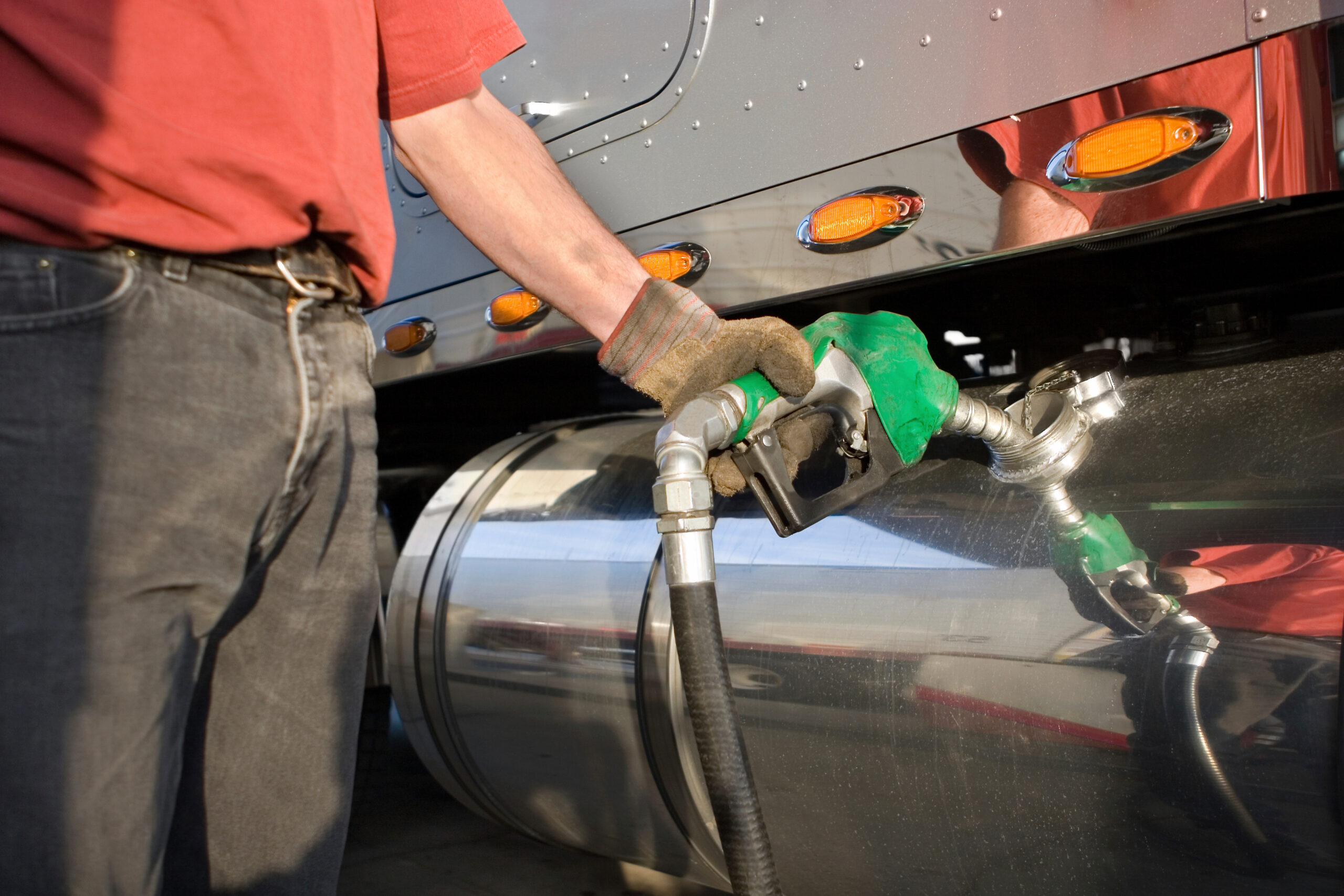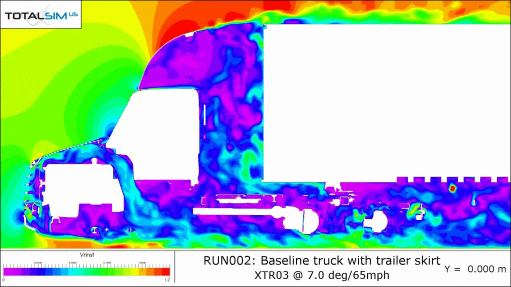11 Effective Fuel Saving Devices for Semi Trucks
Over the last two years, fuel prices have seen a dramatic increase.
In May of 2020, gas prices reached a $1.961 per gallon low, then steadily climbed to an all-time high of $5.032 per gallon in June of 2022. Diesel prices mirrored this trend, with a low of $2.392 per gallon and a high of $5.754 during the same period.
With inflation on the rise, it wouldn’t be surprising if even higher prices are right around the corner.
What does this mean for trucking fleets? Fuel typically accounts for 60% or more of operating costs, so steep fuel prices can quickly decimate a fleet budget. The simplest way to offset high prices is to use less fuel but the question is, how?
Some fleets may consider adding EVs to their lineup, but the acquisition and operational costs typically don’t offset fuel cost savings. A more affordable approach is to purchase fuel saving devices for semi trucks, which can easily be added to existing fleet assets.
Which are the best fuel saving devices for semi trucks? These 11 semi trucks fuel saving devices can help fleets become more fuel efficient and make up for rising fuel costs.
1. TruckWings
How it works: Did you know the gap between a truck’s cab and trailer is a fuel waster? TruckWings closes this gap to reduce drag, improve stability, and increase fuel efficiency.
The tractor-mounted device deploys automatically at speeds above 52 mph to improve aerodynamics and reduce buffeting and trailer sway in crosswinds. The device then retracts when the speed dips below 50 mph. No action is needed by the driver to deploy TruckWings — eyes stay on the road and hands stay on the wheel.
Results: Users of TruckWings see 3-6% in fuel savings. That can add up to thousands of dollars in savings per truck and millions across an entire fleet. And since TruckWings is equipped with real-time telematics, fleets can easily track their return on investment.
TruckWings outperforms even the longest side-extenders on the market, making it one of the best fuel saving devices for semi trucks. So perhaps it’s not surprising that half of the 10 largest North American fleets have used TruckWings, which have stood up across 500 million miles.
Each TruckWings device also reduces 20,000 lbs/yr in carbon emissions, or the equivalent of taking two passenger cars off roadways every year, so the sustainability gains can be huge across an entire fleet.
Ryder System, Inc. tested TruckWings across 2.7 million miles and saw a 4.1% mpg improvement.
You can too.
2. Trailer Skirts
How they work: Trailer skirts extend along the side of the trailer, from the landing gear to the front face of the front trailer axle. The most effective trailer skirts extend as low to the ground as possible. Also called “fairing,” these devices reduce aerodynamic drag on the trailer.
Results: These fuel saving devices for semi trucks typically offer up to a 5% improvement in fuel economy.
3. Roof Fairings
How they work: Roof fairings are similar to trailer skirts but are installed on the roof of tractor-trailers instead of along the side. These fuel saving devices for semi trucks improve aerodynamics by closing the gap when a significant height difference exists between a cab and a container.
Results: Depending on the type, roof fairings can reduce fuel use by 3-15%. However, these are not the best fuel saving devices for semi trucks pulling flatbeds because they can’t close the gap. Roof fairings would not be needed for semi trucks that can reduce drag simply by raising the tire height.
4. Low Rolling Resistance Tires
How they work: Rolling resistance — the friction that occurs when the surface of tires meets the road — accounts for 30-33% of the total fuel cost of a modern, aerodynamic Class 8 truck. Low rolling resistance (LRR) tires lower the resistance to improve fuel economy.
Results: A 10% drop in rolling resistance equates to about a 1% improvement in fuel economy. Fleet owners should be aware that LRR tires can wear out quickly, and because most manufacturers don’t publish their rolling resistance coefficients, there can be big differences between tire options, even if they are SmartWay certified.
5. GPS Route Planners
How they work: GPS route planners are fuel saving devices because they optimize routes to reduce the miles driven, thereby reducing fuel use.
Results: Every mile shaved off a trip saves fuel. Results of this semi truck fuel saving device will vary based on miles traveled and how efficient routes were before implementing the GPS solution.
6. Tire Inflation Systems
How they work: Tire monitoring or tire inflation systems keep tires inflated to their proper pressure. Some systems may require a driver to inflate tires when notified pressure is low, while others may automatically inflate the tires.
Results: Proper tire inflation can improve fuel economy by 0.6% on average and up to 3%.
7. Wheel Covers
How they work: Wheel covers improve aerodynamics by reducing drag around the wheels.
Results: Wheel cover kits can reduce fuel consumption by approximately 1% for both tractors and trailers. Combined, this equates to 2.61 gallons of fuel saved for every 1,000 miles driven.
8. Electronic Engine Monitoring
How they work: Electronic engine monitors measure driving performance to identify fuel-wasting behavior, such as hard braking and rapid acceleration.
Results: Results will vary for these fuel saving devices for semi trucks based on how much driving habits have improved but could have a 20-30% improvement on overall fuel efficiency.
9. Automated Manual Transmissions
How they work: Automated manual transmissions (AMTs) have a manual gearbox, but instead of requiring the driver to shift, the clutch and gearshifts are controlled electronically to maximize engine use. AMTs monitor changing roadway conditions like road grade, acceleration, and vehicle speed, then instantly shift to the most efficient gear, saving fuel in the process.
Results: AMTs improve fuel economy by 1% to 3%.
10. Anti-Idle Devices
How they work: Truck drivers idle engines for good reasons: keeping the engine block warm, heating and cooling the cabin when they rest, and powering cabin appliances. But doing so consumes almost a gallon of diesel fuel per hour and constitutes nearly 8% of total fuel use. Anti-idling devices provide alternative power sources to idling for these functions.
Results: A direct-fired heater that warms the engine block and provides heat for the cabin reduces fuel use during idling by 75%. Another anti-idle device is an auxiliary power unit (APU) — a generator powered by diesel fuel or batteries to heat and cool the cabin and power appliances. Diesel APUs reduce fuel consumption by 75% or more over idling.
11. Adaptive and Predictive Cruise Control
How they work: Adaptive cruise control enhances regular cruise control using a radar or laser sensor to sense the traffic ahead and adjust vehicle speed to maintain a safe distance. Predictive cruise control uses GPS to analyze the topography of upcoming sections of road for improved uphill and downhill driving.
Results: Cruise control, predictive cruise control, and adaptive cruise control can reduce fuel consumption by 1-10%.
Reduce Your Fuel Costs
When it comes to fuel saving devices for semi trucks, fleet owners have options.
If you’re ready to improve your fleet efficiency, learn more about how TruckWings can help you save up to 6% in fuel costs.



